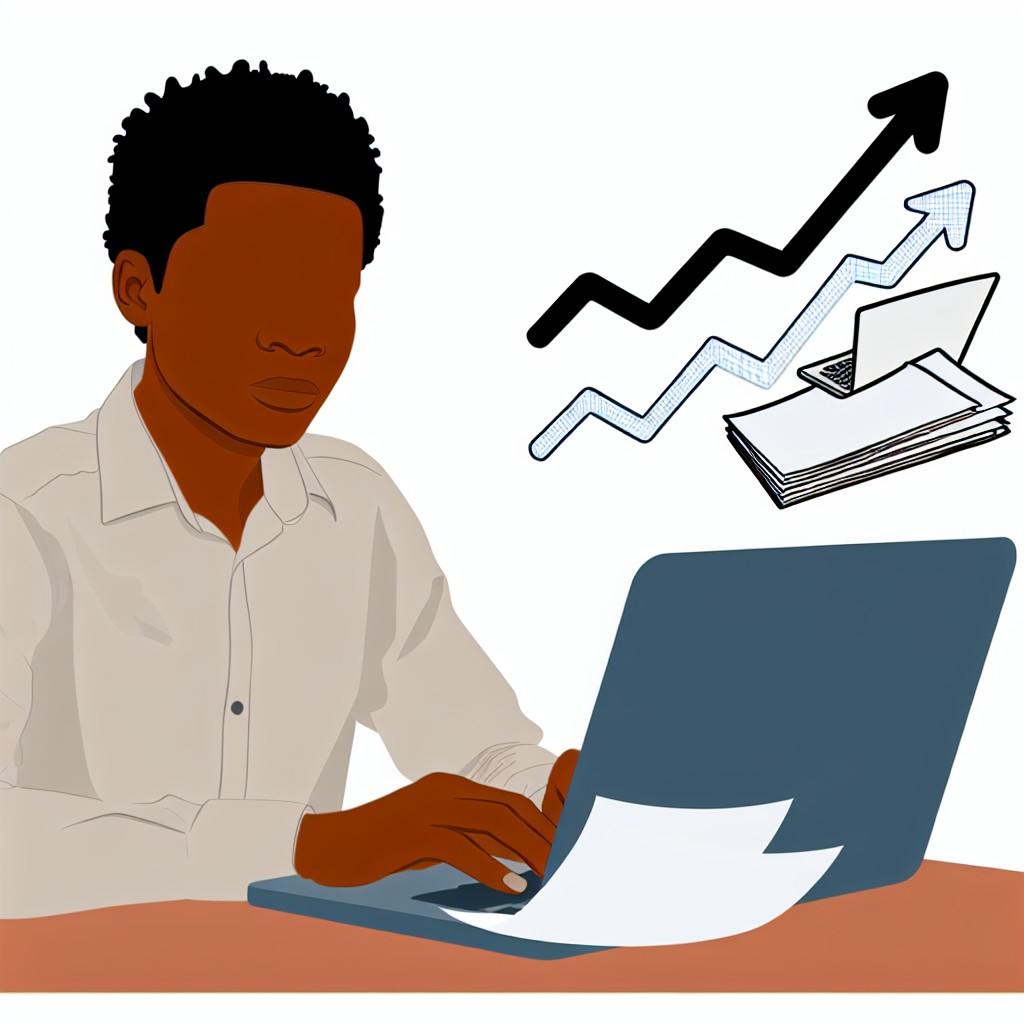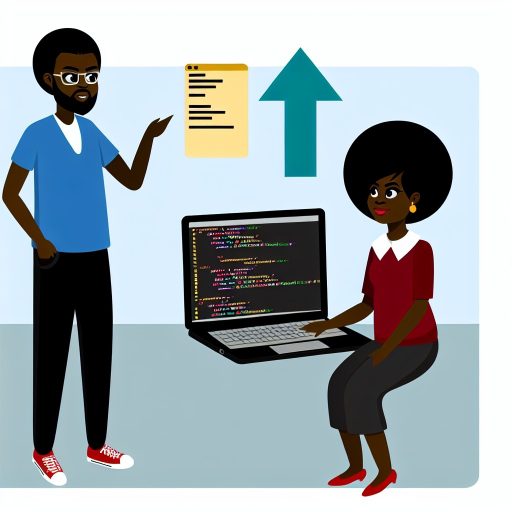Developing a Fintech App to Simplify Mobile Payments and Money Transfers
Identifying Key Features for User Convenience
A successful fintech app must prioritize seamless user experiences.
Start by incorporating essential features that simplify mobile payments.
Ensure the app enables quick and secure money transfers locally and internationally.
Additionally, integrating real-time transaction notifications enhances transparency.
Offer multi-currency support to cater to diverse financial needs.
Include options for bill payments and airtime top-ups for better utility.
Designing a Secure and Intuitive User Interface
Focus on clean and simple navigation to reduce user frustration.
Use familiar icons and prompts to guide users effortlessly.
Moreover, apply biometric authentication for secure and fast access.
Always maintain encryption standards to protect sensitive data.
Secure user authorization processes with multi-factor authentication.
Integrating Reliable Payment Gateways and APIs
Choose reputable payment gateways like Paystack or Flutterwave for Nigerian markets.
This ensures smooth transaction processing and reduces downtime.
Furthermore, integrate APIs that support bank-to-wallet and wallet-to-wallet transfers.
Test API response times thoroughly to avoid transaction failures.
Unlock Your Unique Tech Path
Get expert tech consulting tailored just for you. Receive personalized advice and solutions within 1-3 business days.
Get StartedPrioritize compatibility with both Android and iOS platforms for wider reach.
Ensuring Compliance with Financial Regulations
Understand the Central Bank of Nigeria’s regulations regarding fintech operations.
Incorporate Know Your Customer (KYC) processes to verify user identity.
Maintain audit trails for transactions to comply with anti-money laundering laws.
Collaborate with legal experts to keep the app updated with regulatory changes.
Such compliance builds trust among users and financial partners.
Testing and Deploying the Application
Conduct usability testing with real users to gather actionable feedback.
Identify and fix bugs that may impact transaction accuracy.
Optimize the app’s performance for low-bandwidth environments common in Nigeria.
Launch a beta version first to monitor real-world usage and stability.
Finally, deploy the app on popular app stores for maximum visibility.
Building a Job Matching Platform Tailored for Nigerian Freelancers and Employers
Identifying Local Needs and Challenges
Nigerian freelancers often struggle to find reliable job opportunities suited to their skills.
Employers also face challenges locating qualified candidates within the local market.
Therefore, a tailored job platform can bridge this gap effectively.
Unlock Premium Source Code for Your Projects!
Accelerate your development with our expert-crafted, reusable source code. Perfect for e-commerce, blogs, and portfolios. Study, modify, and build like a pro. Exclusive to Nigeria Coding Academy!
Get CodeUnderstanding regional economic dynamics ensures the platform meets specific local demands.
Key Features to Include in the Platform
User Profiles with Skill Verification
Profiles should showcase verified skills and portfolios of freelancers.
This strengthens trust between freelancers and employers during hiring decisions.
Advanced Search and Matching Algorithms
Implement search filters allowing employers to narrow candidates by skill, experience, and rating.
Additionally, algorithms should suggest job matches proactively to freelancers.
Secure Payment and Escrow Services
Integrate secure payment gateways to protect both parties financially.
Escrow services ensure funds release only when work meets agreed standards.
Technology Stack and Development Approach
Choose scalable back-end frameworks like Laravel or Node.js for server-side logic.
React or Vue.js can power a dynamic and responsive front-end user experience.
Utilize PostgreSQL or MongoDB for efficient data storage and retrieval.
Deploy on cloud platforms such as DigitalOcean or AWS to ensure reliability.
Building Trust and Community Engagement
Include rating and feedback systems to maintain high service quality.
Host webinars and workshops to educate users about freelancing best practices.
Partner with local organizations like TechFuture Hub to expand outreach and credibility.
Marketing Strategies to Attract Initial Users
Leverage social media platforms popular in Nigeria, including Twitter and Instagram.
Implement referral programs that reward users for inviting skilled freelancers or employers.
Create localized content highlighting success stories of Nigerian freelancers gaining global clients.
Creating an AI-Powered Chatbot for Customer Support in Local Languages
Understanding the Importance of Local Language Support
Many Nigerian customers prefer interacting in their native languages.
Therefore, businesses can greatly improve customer satisfaction by offering local language support.
Moreover, a chatbot that understands local languages reduces communication barriers effectively.
Consequently, it enhances customer engagement and loyalty significantly.
Planning the Chatbot Development
Start by defining your chatbot’s main objectives clearly.
For instance, NairaTech Solutions aims to reduce customer wait times using a chatbot.
Next, identify the target local languages to support, such as Yoruba, Igbo, and Hausa.
Also, consider the key customer support scenarios your chatbot should handle.
These may include frequently asked questions, product information, and complaint registration.
Choosing the Right AI and Language Processing Tools
Select AI frameworks that support natural language processing (NLP) in multiple languages.
For example, use platforms like Rasa or Google Dialogflow with custom language support.
Additionally, integrate language translation APIs like Microsoft Translator when needed.
Furthermore, train your chatbot with local language datasets to enhance accuracy.
Designing the Chatbot Conversation Flow
Map out conversational paths that reflect real customer interactions.
Include greetings, question handling, and error correction in the design.
Ensure the chatbot can switch between languages smoothly, based on user preferences.
Use fallback responses to manage unexpected inputs gracefully.
Implementing Language and Cultural Nuances
Incorporate idiomatic expressions to make interactions feel natural.
For example, greetings and polite phrases that reflect local customs add warmth.
Also, consider tone variations appropriate for formal and informal conversations.
Moreover, respect cultural sensitivities regarding topics and responses.
Testing and Improving Chatbot Performance
Conduct user testing with native speakers from different regions.
Gather feedback on language accuracy and conversational flow.
Continuously update the chatbot’s language models based on real interactions.
Additionally, monitor chatbot analytics to identify and fix common issues.
Deploying and Promoting the Chatbot
Integrate the chatbot with popular platforms like WhatsApp and Facebook Messenger.
Given Nigeria’s mobile usage, mobile-friendly access is essential.
Promote the chatbot through digital marketing campaigns to raise awareness.
Train customer support teams to collaborate effectively with the AI assistant.
Career Benefits for Nigerian Developers and Employers
Building such chatbots showcases skills in AI, NLP, and local language technologies.
Employers appreciate developers who can solve real-world communication challenges.
Moreover, these projects highlight cultural awareness and technical versatility.
Therefore, coding this chatbot can significantly boost career prospects in tech.
Discover More: The Key Elements of an Effective Programming Portfolio
Designing a Health Monitoring System Using IoT for Remote Patient Care
Understanding the Role of IoT in Healthcare
Internet of Things (IoT) revolutionizes healthcare by connecting medical devices to the internet.
This technology enables continuous monitoring of patients outside traditional clinical settings.
As a result, healthcare providers gain real-time access to crucial patient data.
Subsequently, timely interventions become possible, improving patient outcomes significantly.
Moreover, IoT reduces hospital visits, which benefits both patients and medical facilities.
Essential Components of the Health Monitoring System
A typical IoT health monitoring system includes sensors, a communication module, and a data processing unit.
Sensors collect vital signs like heart rate, blood pressure, and oxygen levels efficiently.
Successful designs integrate wireless modules such as Wi-Fi or GSM to transmit data securely.
Furthermore, cloud-based platforms provide storage and enable complex data analytics.
To enhance usability, the system may include mobile or web applications for easy access by healthcare providers.
Designing the Sensor Network for Accurate Data Collection
Selecting reliable sensors is fundamental to obtaining precise health measurements consistently.
Also, engineers should consider sensor placement to ensure patient comfort and accuracy.
For example, wristbands and chest patches offer convenient ways to monitor cardiac activity.
Additionally, integrating redundancy helps maintain data consistency during sensor failures.
Data Transmission and Security Measures
Secure data transmission safeguards patient privacy during remote monitoring.
Implementing encryption protocols such as TLS ensures data integrity over wireless networks.
Moreover, devices should authenticate with servers to prevent unauthorized access.
Consequently, compliance with healthcare regulations like Nigeria’s NDPR is essential.
Data Processing and Real-Time Alerts
Data collected must be processed to detect anomalies quickly and accurately.
Machine learning algorithms can analyze patterns and predict potential health risks.
Therefore, timely alerts can notify caregivers or doctors when intervention is required.
This approach helps prevent emergencies by enabling proactive care management.
Building User-Friendly Interfaces for Healthcare Providers
Designing intuitive dashboards simplifies the monitoring process for medical staff.
Visualizations like charts and trend lines make data interpretation straightforward.
Furthermore, customizable alert settings allow personalized patient care management.
Finally, mobile compatibility ensures health data is accessible anytime and anywhere.
Potential Challenges and Solutions in Implementation
Connectivity issues may disrupt real-time data transmission in rural areas.
To address this, hybrid communication technologies can maintain seamless connections.
Battery life of wearable devices also poses a significant design challenge.
Thus, optimizing power consumption prolongs device operational time effectively.
Lastly, ensuring data privacy requires constant updates to security protocols.
Advancements and Impact of Remote Monitoring in Nigerian Healthcare
Companies like MedConnect Nigeria have pioneered remote health monitoring solutions using IoT.
These innovations have improved care for patients with chronic illnesses in remote locations.
Likewise, clinics supported by HealthBridge Technologies utilize such systems to monitor elderly patients.
Ultimately, these projects demonstrate the transformative power of IoT in Nigerian healthcare.
Uncover the Details: How to Present Programming Projects During Interviews
Constructing an E-commerce Marketplace Focused on Nigerian Artisans and SMEs
Identifying the Target Market and Their Needs
Nigerian artisans and SMEs face challenges accessing broader markets.
They require a platform to showcase unique products effectively.
Additionally, buyers seek authentic Nigerian crafts and local goods.
Therefore, building a tailored e-commerce solution meets these dual needs.
Designing User-Friendly Interfaces for Sellers and Buyers
Start by creating intuitive registration and profile management for sellers.
Ensure artisans can easily list and update their products.
Moreover, buyers should enjoy smooth browsing and purchasing experiences.
Incorporate filters and categories reflecting Nigerian artisan product types.
This approach enhances user engagement and satisfaction immediately.
Implementing Secure and Diverse Payment Solutions
Offer multiple payment options popular in Nigeria, such as bank transfers and mobile money.
Include payment gateways like Paystack and Flutterwave for convenience.
Also, prioritize security to protect user data and transactions.
Such measures build trust between buyers, sellers, and the platform.
Integrating Logistics and Delivery Services
Collaborate with local logistics startups like MAX.ng or GIG Delivery.
Provide real-time tracking features for delivered goods.
Offer flexible delivery options tailored to various Nigerian regions.
Efficient logistics ensure timely delivery and customer satisfaction.
Marketing Strategies to Promote the Marketplace
Leverage social media platforms popular in Nigeria, like Instagram and Twitter.
Create partnerships with Nigerian influencers who support local crafts.
Use email newsletters to engage and update registered users regularly.
Additionally, organize online events showcasing featured artisans and their stories.
Utilizing Analytics to Drive Continuous Improvement
Implement tools to monitor user behavior and sales trends on the platform.
Analyze data to identify popular products and areas needing improvement.
Use insights to customize marketing and enhance user experience.
This data-driven approach fosters sustainable growth for the marketplace.
You Might Also Like: How Programming Projects Can Showcase Your Skills to Employers
Implementing a Smart Agriculture Solution for Crop Monitoring and Yield Prediction
Overview of Smart Agriculture Technology
Smart agriculture enhances farming practices using modern technology.
It integrates sensors, data analytics, and automation for efficiency.
Farmers benefit from real-time insights and predictive analysis.
Consequently, it reduces waste and improves crop management.
Essential Components of the Solution
The solution consists of IoT sensors, data platforms, and machine learning models.
IoT sensors collect data on soil moisture, temperature, and crop health.
Tech experts like Ayodele Olanrewaju emphasize sensor reliability in farms.
Data platforms store and process sensor data effectively.
Moreover, machine learning algorithms analyze patterns to predict yields.
Data Collection and Sensor Deployment
Strategically placing sensors maximizes coverage of the farmland.
Sensors must withstand harsh weather conditions common in Nigeria.
Companies such as AgroNex specialize in durable agricultural sensors.
Regular calibration ensures measurement accuracy over time.
Farmers can track crop conditions via user-friendly mobile applications.
Yield Prediction Using Machine Learning
Data scientists train models on historical farming data collected locally.
Algorithms like random forests and neural networks provide accurate forecasts.
These predictions help farmers plan harvesting and market strategies.
For instance, Kolawole Agbaje successfully applied these models in Kano farms.
Continuous model updates improve prediction reliability with new data.
Advantages for Nigerian Farmers and Agricultural Employers
The solution empowers farmers to optimize resource use and increase profits.
Employers value developers implementing scalable and practical ag-tech solutions.
Moreover, this project showcases skills in IoT, data science, and software development.
It also contributes to food security and sustainable farming techniques.
Therefore, it stands out as an innovative project to impress potential employers.
You Might Also Like: How to Balance Learning and Doing in Programming Projects

Developing a Real-Time Public Transport Tracking Mobile Application
Understanding the Need for Real-Time Tracking
Public transport users in Lagos face unpredictable wait times daily.
Consequently, commuters often experience inconveniences and delays.
A real-time tracking app offers immediate insights into vehicle locations.
This feature empowers passengers to plan their trips efficiently.
Moreover, it enhances the overall public transport experience significantly.
Core Features to Implement
Live Vehicle Location Updates
The app continuously fetches GPS data from buses and taxis.
Hence, users see up-to-the-minute vehicle positions on a map interface.
This functionality reduces uncertainty about arrival times effectively.
Route Planning and Timetables
Integrate route maps with comprehensive schedules for all transport lines.
This allows commuters to find the best routes quickly.
Furthermore, dynamic timetable updates reflect current traffic conditions.
Alert and Notification System
The application sends real-time alerts about delays or route changes.
This keeps passengers informed while they wait at bus stops.
Additionally, users receive reminders for upcoming departures.
Technical Architecture and Tools
Backend Services and APIs
Use Node.js with Express to build the server supporting data exchange.
GPS data can be retrieved through integrations with local transport authorities.
This backend efficiently processes real-time location streams for the app.
Mobile App Development Frameworks
React Native offers cross-platform capabilities for both Android and iOS.
It ensures smooth user experiences and faster development cycles.
Alternatively, Flutter provides expressive UI components and native performance.
Database and Cloud Hosting
Firebase can manage real-time database needs and user authentication.
AWS or Google Cloud hosts the backend services securely in the cloud.
These scalable platforms support growth as user numbers increase.
User Interface and Experience Design
Design a clean interface focused on easy access to tracking information.
Ensure map visuals are clear and zoom functions are intuitive.
Additionally, implement simple menus and accessible navigation buttons.
Conduct usability tests with Lagos commuters for continuous improvement.
Benefits for Nigerian Coders and Employers
Building this app showcases proficiency in mobile and backend development.
It demonstrates problem-solving skills relevant to urban challenges.
Moreover, working with real-world data impresses prospective employers.
Collaborating with transport authorities highlights professionalism and networking.
Ultimately, it positions Nigerian coders as innovators in technology solutions.
Building a Personalized Learning Platform with Localized Content for Nigerian Students
Understanding the Need for Personalized Learning
Many Nigerian students face challenges with generic educational content.
Personalized learning platforms can address diverse learning needs effectively.
These platforms adapt to individual students’ pace and preferences.
They improve engagement and knowledge retention.
Such tools support varied educational backgrounds across Nigeria.
Incorporating Localized Content
Localized content makes learning more relevant and relatable for students.
Including Nigerian history, culture, and languages enhances understanding.
Local examples illustrate concepts better than foreign contexts.
Developers should collaborate with local educators to source authentic material.
This collaboration ensures accuracy and cultural sensitivity in the curriculum.
Key Features to Include
The platform should offer adaptive quizzes to track student progress.
Interactive multimedia content increases student engagement significantly.
Offline access supports learners with inconsistent internet connectivity.
Incorporating gamification elements motivates students to continue learning.
Dashboards allow teachers like Amina Okoye to monitor class performance easily.
Technical Considerations and Tools
Using React Native enables cross-platform mobile app development efficiently.
Backend APIs can be built with Node.js to handle dynamic content delivery.
Implementing machine learning algorithms personalizes content based on student behavior.
Deploying on cloud platforms like Microsoft Azure ensures scalability.
Ensuring data privacy complies with Nigeria’s NDPR enhances user trust.
Collaborating with Educational Stakeholders
Partnering with Nigerian schools helps tailor the platform to real needs.
Involving organizations such as the Nigeria Education Data Summit boosts credibility.
Feedback from tutors like Musa Ibrahim improves the user experience.
Workshops and training sessions encourage adoption among educators and students.
Continual updates address evolving educational policies and technologies effectively.
Creating a Blockchain-Based Land Registry System to Enhance Property Security
Importance of Secure Land Registration in Nigeria
Property ownership disputes often cause significant challenges in Nigeria.
Many land registries suffer from fraud and data manipulation.
Therefore, secure and transparent land records are essential for trust.
Using blockchain technology can address these issues effectively.
Moreover, it enables immutable and verifiable property records.
How Blockchain Improves Land Registry Systems
Blockchain creates a decentralized ledger accessible to all stakeholders.
Each property transaction becomes a tamper-proof, time-stamped record.
Consequently, this reduces the possibility of fraudulent ownership claims.
Additionally, smart contracts automate verification and transfer processes.
This automation enhances efficiency and lowers administrative costs.
Key Features to Include in the System
- Immutable record-keeping to prevent unauthorized data changes.
- Transparent audit trails for easy verification by owners and authorities.
- Secure access controls to protect sensitive ownership information.
- Integration with government land offices for official recognition.
- User-friendly interfaces accessible via web and mobile platforms.
Technical Stack and Architecture Considerations
Start with platforms like Ethereum or Hyperledger for blockchain infrastructure.
Use Solidity or Chaincode for writing smart contracts that govern transactions.
Integrate IPFS or similar decentralized storage for property documents.
Design a modular system to allow future scalability and feature additions.
Furthermore, ensure secure authentication using cryptographic keys or biometrics.
Benefits for Nigerian Coders and Employers
Developing this project showcases knowledge of cutting-edge blockchain technology.
It demonstrates problem-solving skills with real-world applicability in Nigeria.
Moreover, it proves ability to build secure, transparent, and reliable solutions.
Employers value candidates who innovate and address critical societal challenges.
This project highlights both technical expertise and social impact awareness.
Designing an Energy Consumption Tracker App to Promote Sustainable Practices
Identifying Key Features for User Engagement
Developers should prioritize features that encourage users to monitor their energy use.
Visual dashboards help users easily understand their consumption patterns.
Real-time tracking enables immediate feedback on energy usage.
Notifications can remind users to reduce energy during peak hours.
Integrating tips for energy saving increases user awareness.
Choosing the Right Technology Stack
Using React Native allows developers to build cross-platform mobile applications efficiently.
Backend APIs built with Node.js support real-time data processing and scalability.
Cloud services like AWS or Azure ensure reliable data storage and access.
Utilizing SQLite or Firebase simplifies local data management on users’ devices.
Combining these technologies delivers seamless performance and user experience.
Designing an Intuitive User Interface
A clean and simple layout helps users navigate the app without confusion.
Colors like green and blue emphasize sustainability and calmness effectively.
Graphs and charts present energy data clearly and attractively.
Accessibility features guarantee the app is usable by people of all abilities.
Interactive elements, such as sliders or toggles, enhance user engagement.
Integrating Data Sources for Accuracy
The app should connect with smart meters or IoT devices to collect accurate energy data.
APIs from utility companies can provide real-time usage statistics securely.
Incorporating user input options allows manual adjustments when needed.
Data privacy must be ensured by encrypting sensitive information consistently.
Regular syncing guarantees users see the most current consumption data.
Promoting Sustainable Behavior Through Gamification
Reward systems motivate users to reduce their energy footprint actively.
Points, badges, or leaderboards create friendly competition and encourage consistency.
Challenges tailored to individual habits make energy saving approachable.
Social sharing features allow users to showcase their achievements with friends.
Consequently, gamification fosters long-term commitment to sustainability goals.
Collaborating with Sustainable Energy Advocates
Partnering with organizations like GreenFuture Nigeria adds credibility to the app.
These collaborations can offer valuable content and expert advice to users.
Joint campaigns increase app visibility and promote broader environmental awareness.
Feedback from advocacy groups helps continuously improve app effectiveness.
Such partnerships align the project with Nigeria’s green energy initiatives effectively.
Additional Resources
How to Make Money While Learning to Code (I Made $5k My First …
How To Get a Web Developer Job in 2024 (without dying inside …




